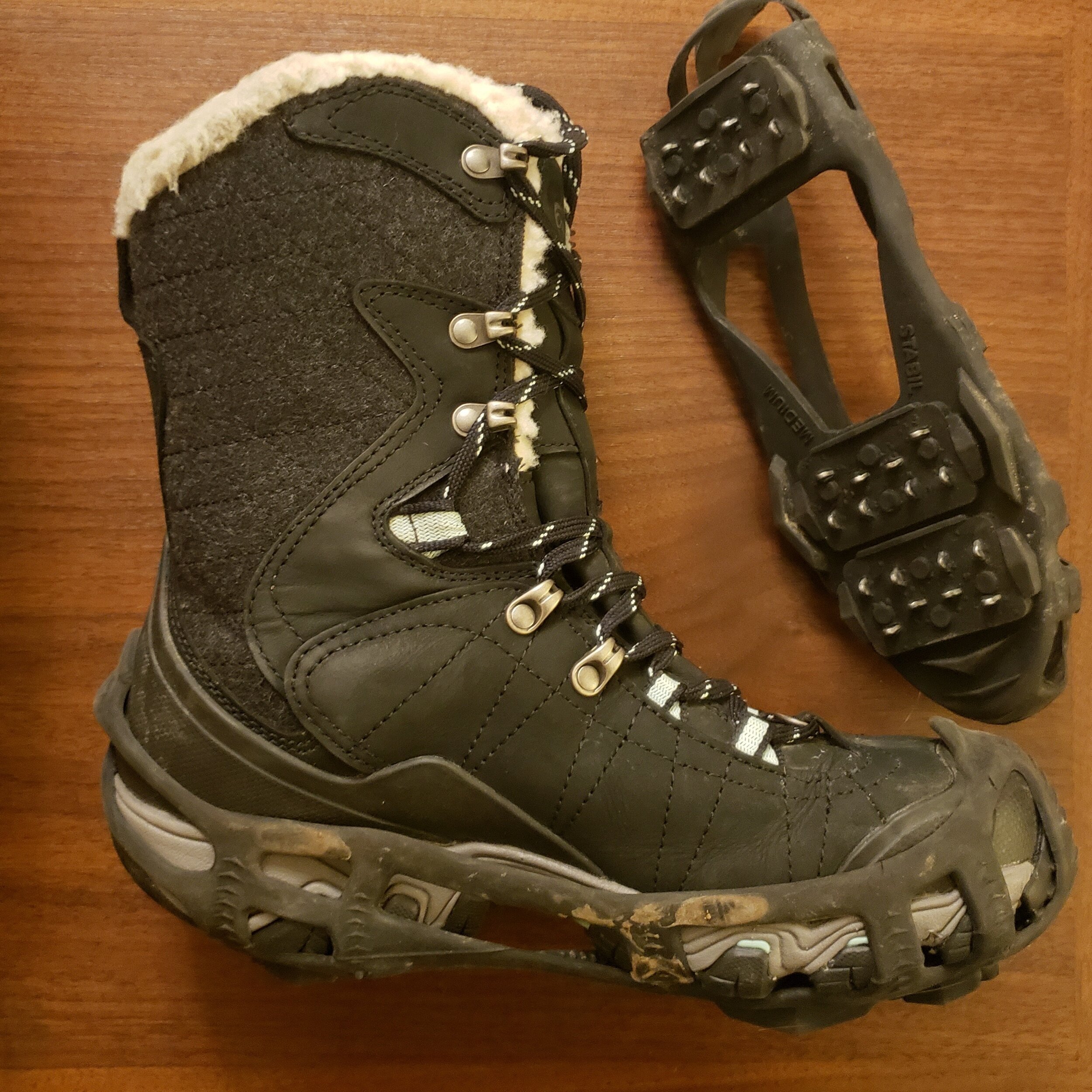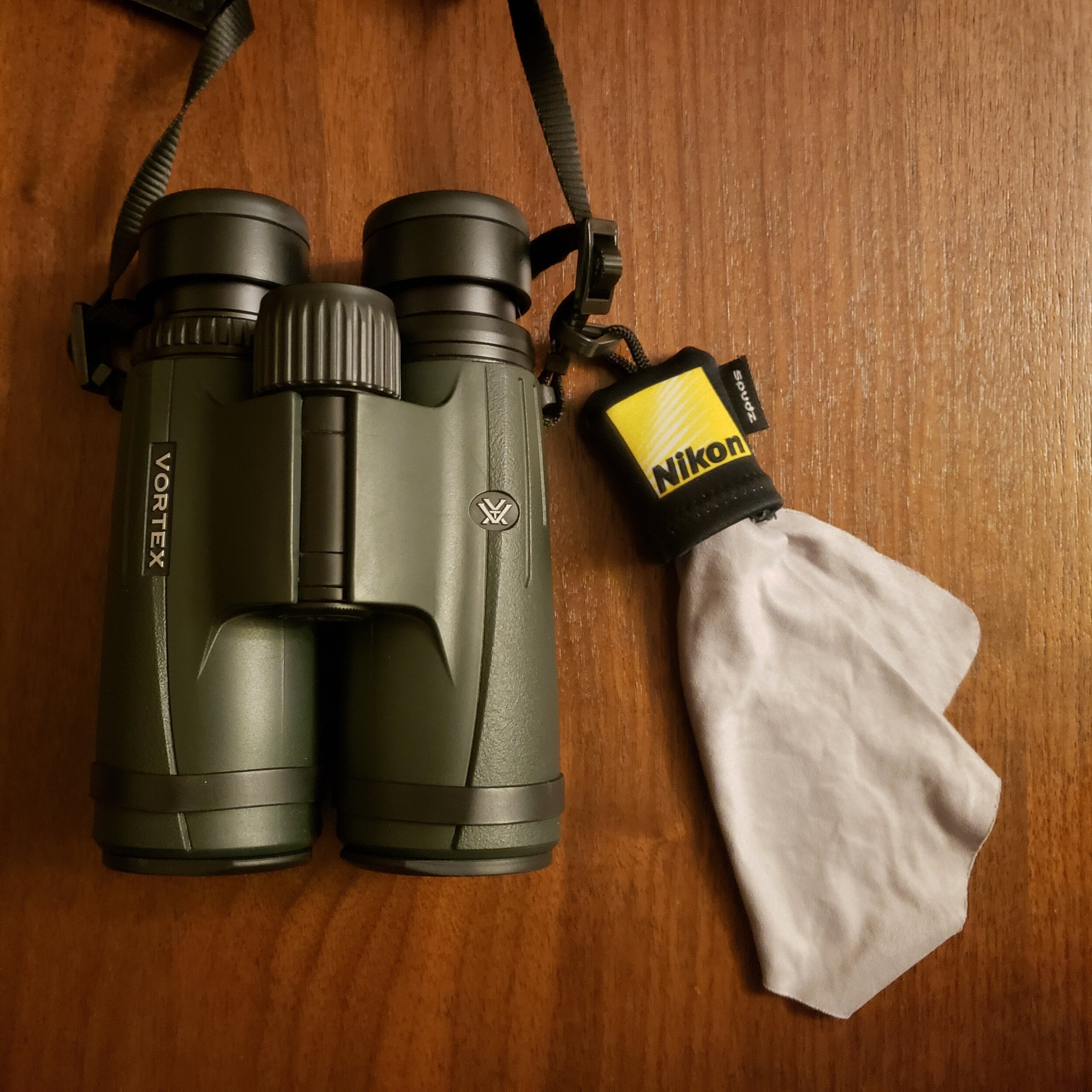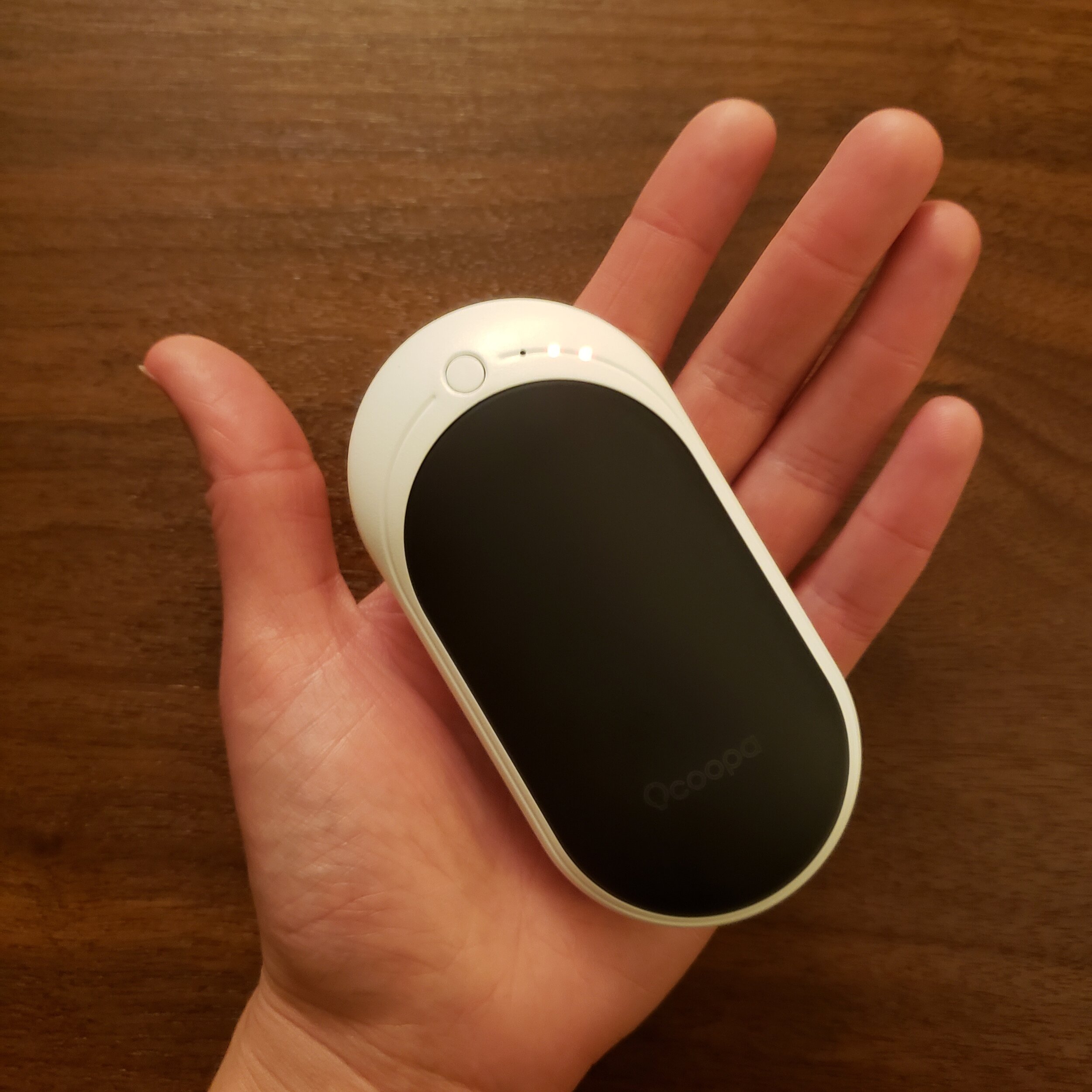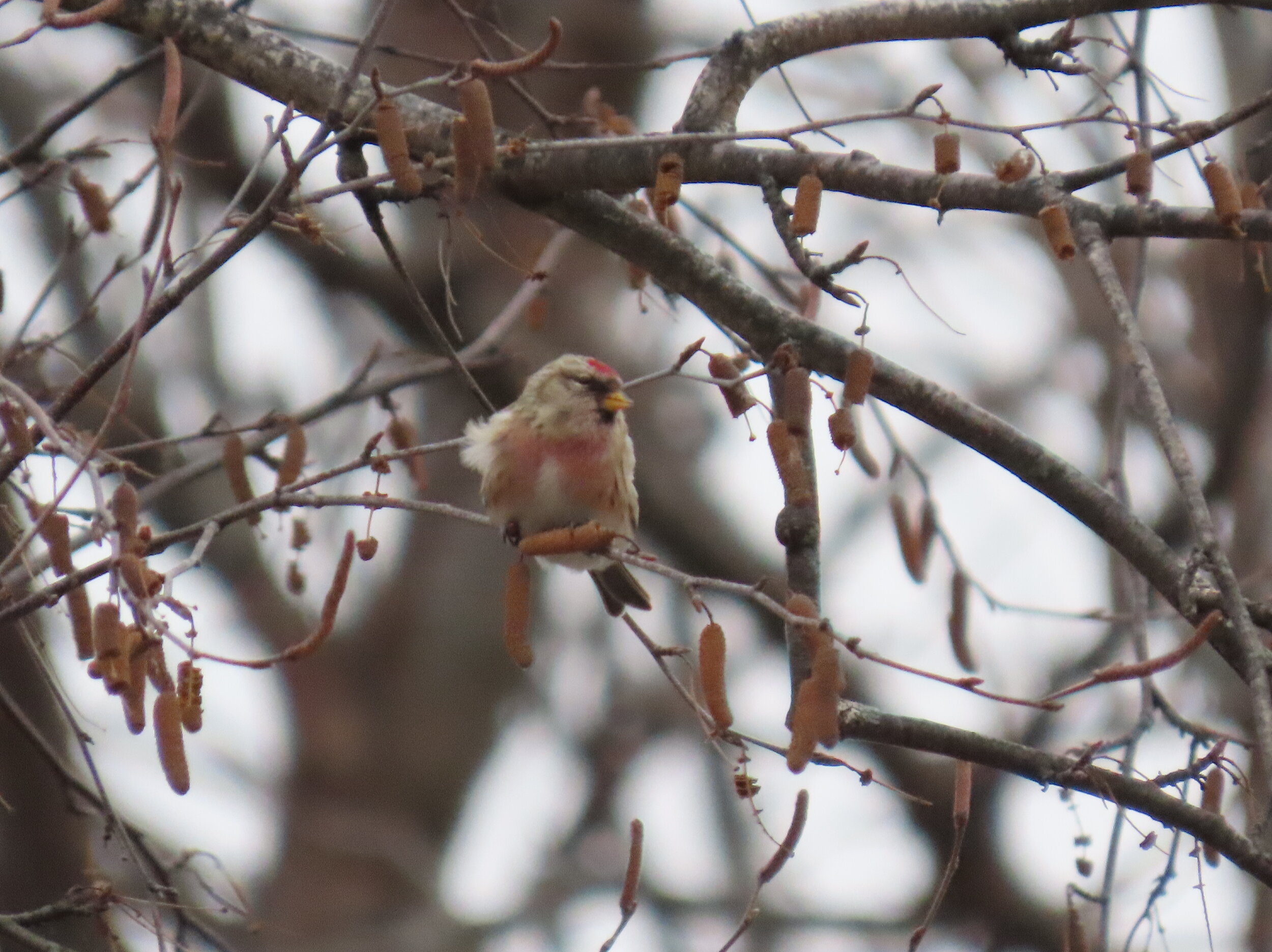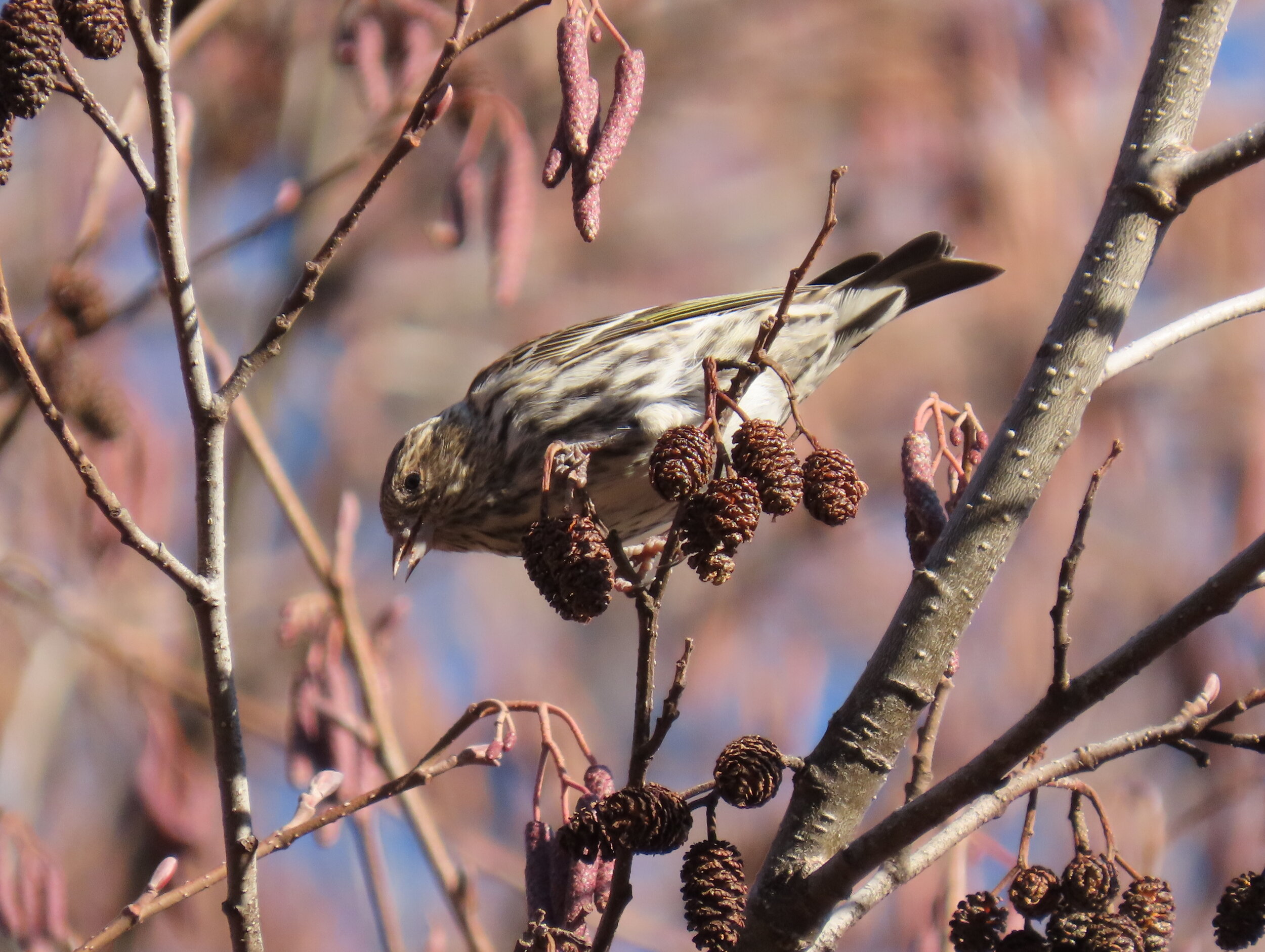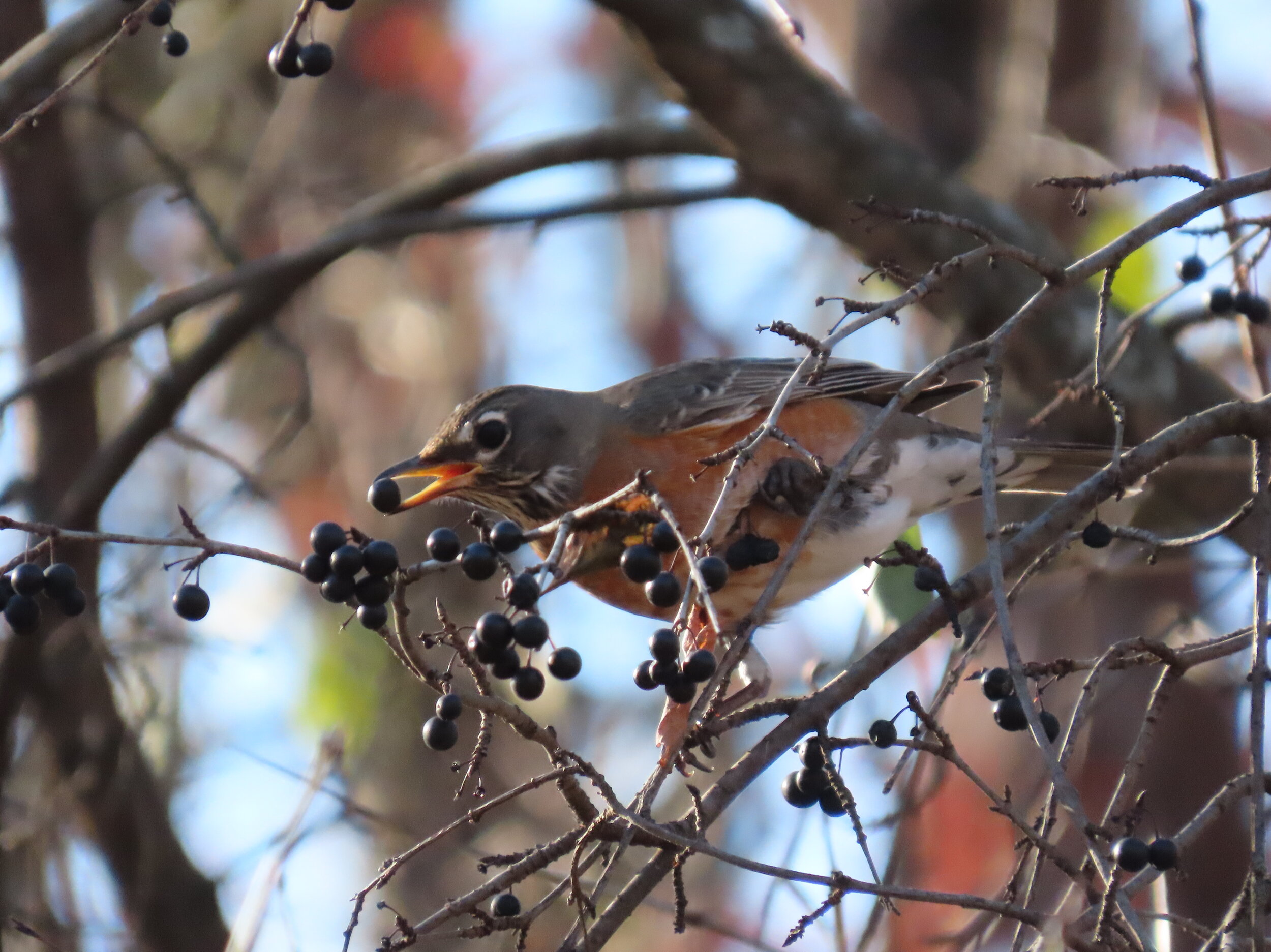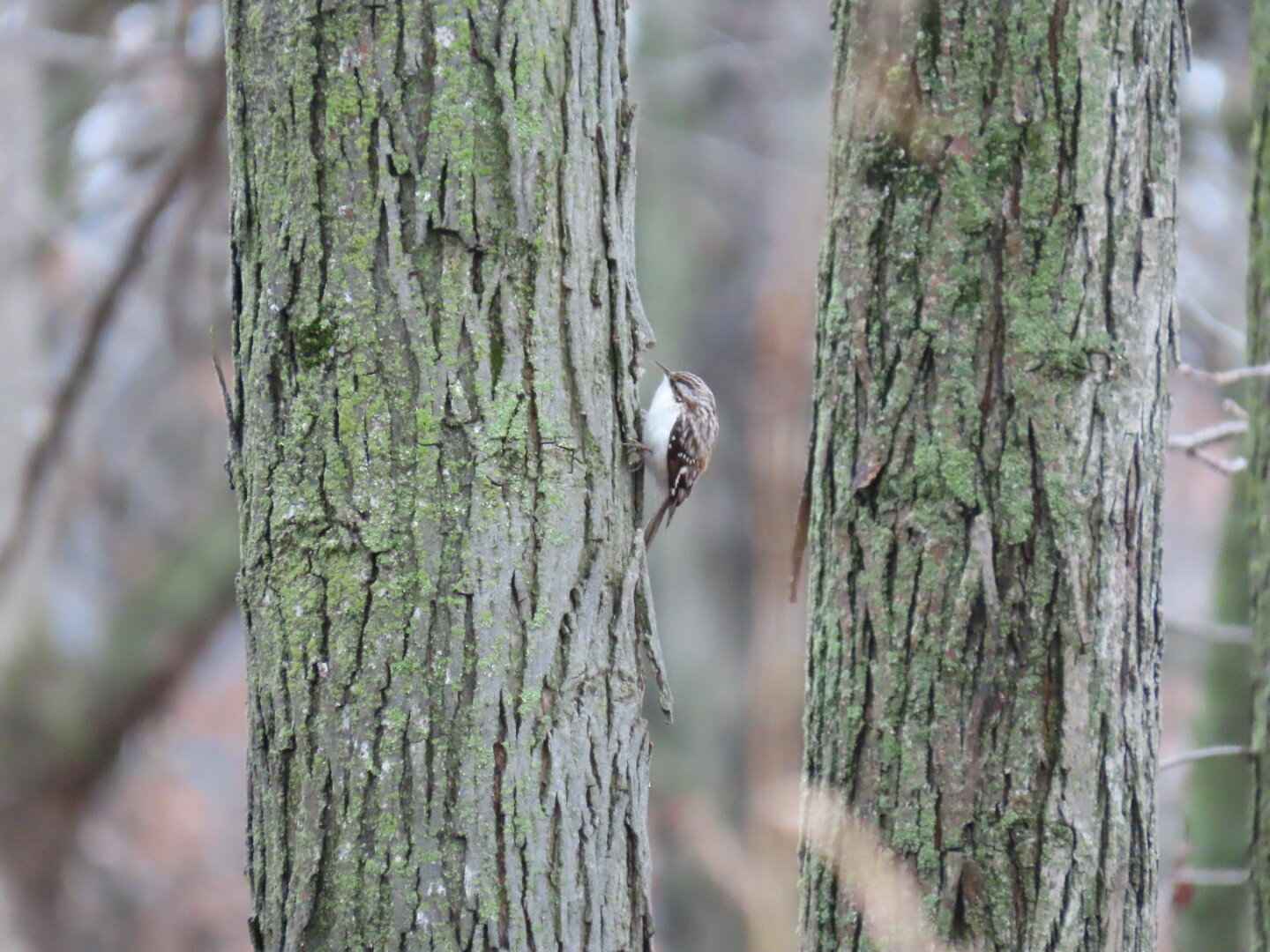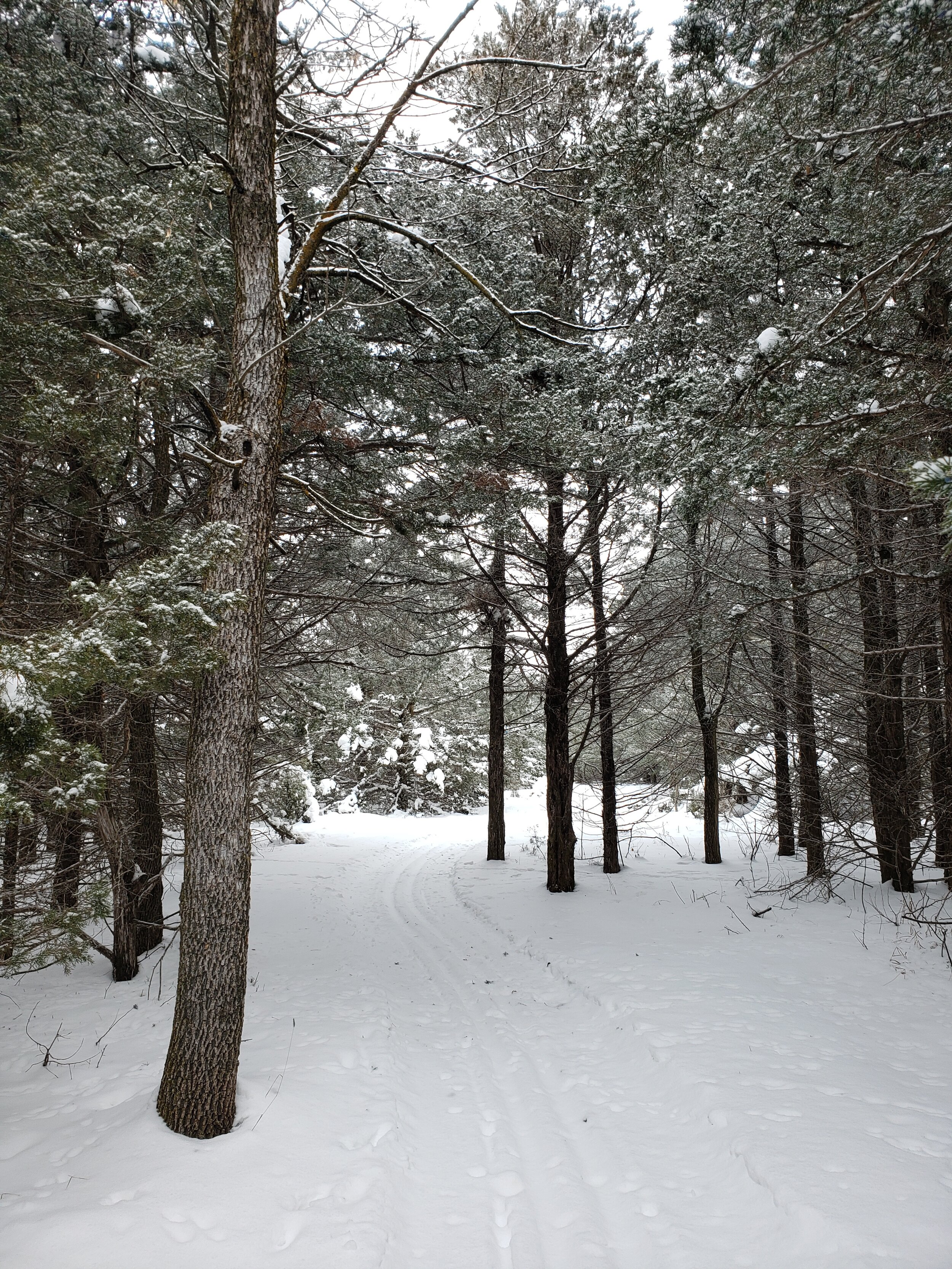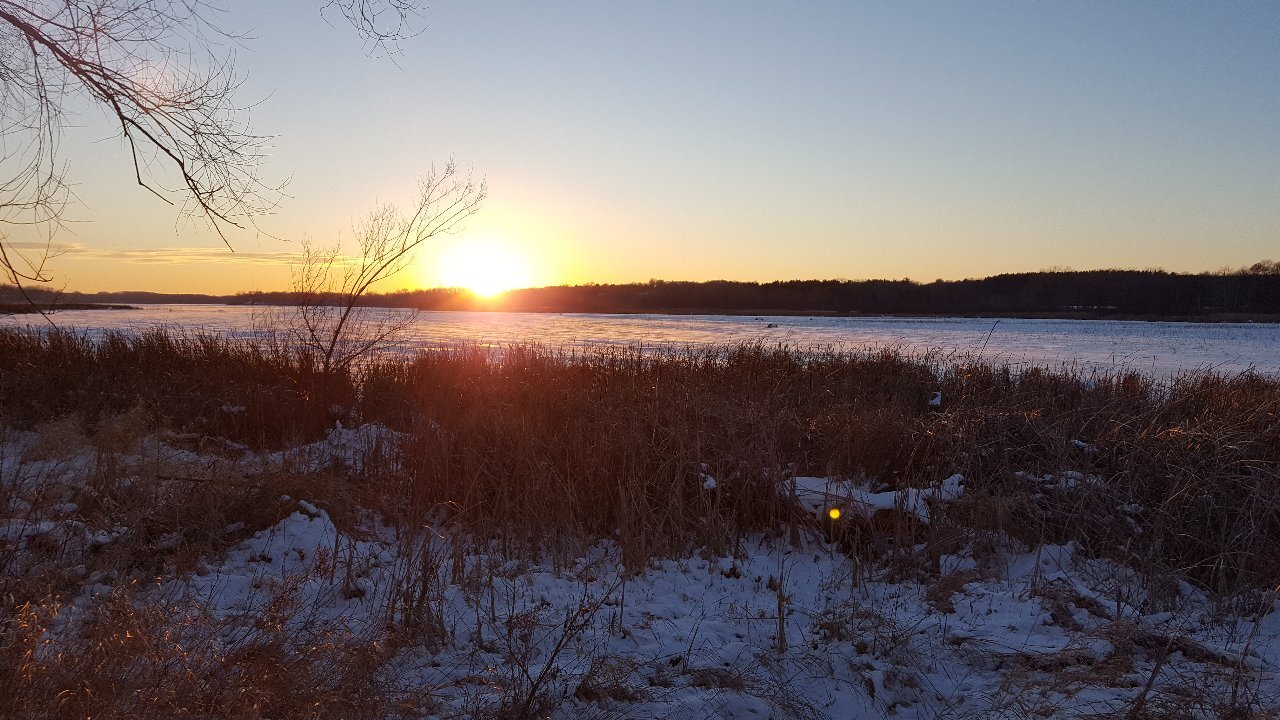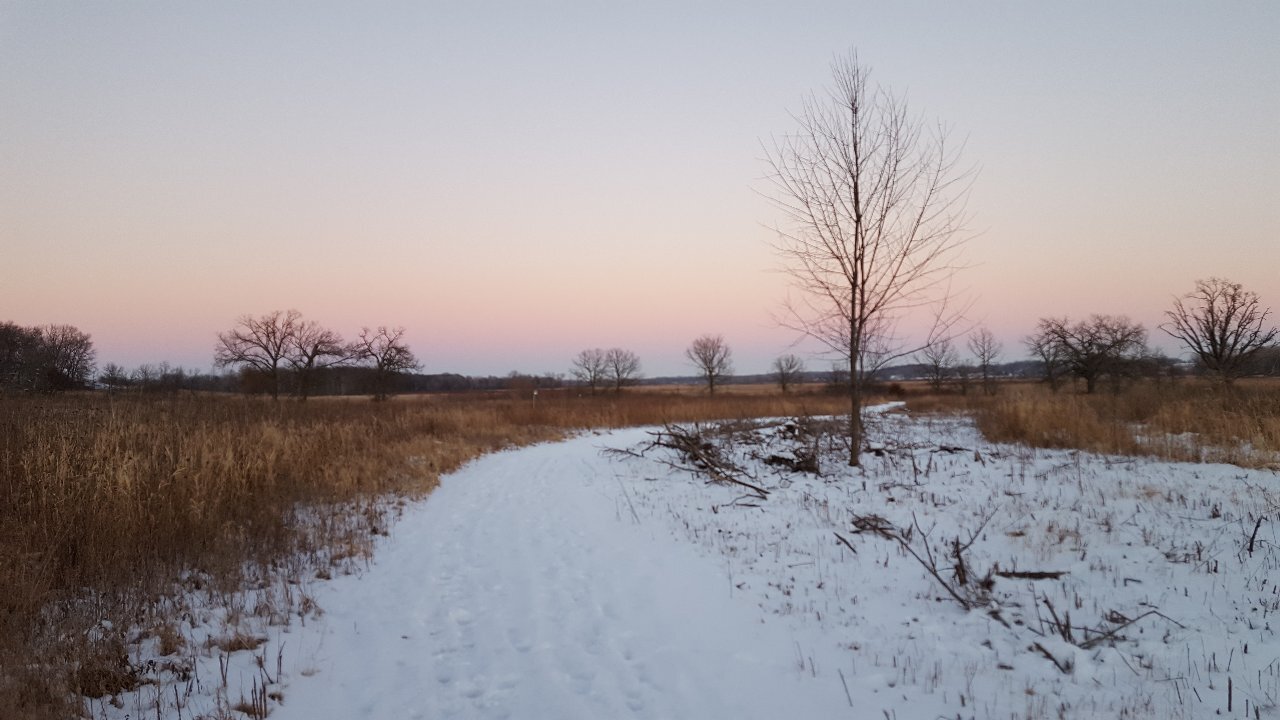We covered the many benefits of “slow birding” several months back, in the warm heat of September. But as the months get colder and colder, you might feel less and less inclined to, y’know, stand in one place outside while the cold ground sucks heat from your toes and your fingertips start to lose feeling.
There’s a reason that birding by car gets popular in the winter, but you should know that you don’t need to give up your outdoor birding adventures just because there is snow on the ground. This week’s Entryway to Birding blog brings you tips for how you can adapt your “slow birding” to a more seasonal “snow birding” and enjoy all the benefits that come with spending quality time in the woods this winter—cold weather and all.
I visited the UW Arboretum on that Saturday we got all the snow—it was the definition of a winter wonderland! Pictured here is Big Spring, which will have open water all winter long. It’s a great spot for some slow/snow birding. Keep an eye out for a great blue heron that likes overwinter at this spot—he tends to tuck away far in the back. Photo by Caitlyn Schuchhardt
I got my first taste of birding last fall and those initial months of excitement went by in a blur. And then the cold of winter began to set in. I faced a bit of dilemma—I was hooked on birds but was also a bit of a “hibernator” who, in past years, would choose to cuddle at home with a book rather than trek outdoors.
Birds gave me the push I needed to become one of those “winter people,” yes, those folks who would knowingly choose to go outside when the temperature was certifyingly frigid. I wasn’t about to give up the one thing that had been bringing me so much joy during a time of year when I knew that my mental health would be struggling.
A winter wonderland indeed! Pictured here is the pine collection in Longenecker Gardens at the UW Arboretum. Trudging through all that snow was a bit of a workout. Let winter birding be your cardio too! Photo by Caitlyn Schuchhardt
And so I didn’t. I birded daily through the winter—in fact, I took inspiration from some fellow birders and made a challenge to myself to submit an eBird checklist every day and keep my “checklist streak” going on eBird. It became some good motivation to let birds lift my winter spirits—even if I only looked at them from my apartment window on those really cold days.
But in order to get myself to a place where I was able to actually enjoy not just the birds, but winter itself, I needed some advice from my fellow winter birders to turn myself into a real “snow birder.” They taught me everything from dressing for the weather, to where to look for birds when the woods seem quiet, to how to enjoy the simplest of birding pleasures—the kind that only slow birding, or should I say, snow birding, can bring.
Today I’m passing their advice on to you. Read on and prepare yourself for a rewarding and satisfying season of birding—one that may challenge you, but also bring you the calm and peace and solace that you may be seeking this year.
Dress for (Birding) Success
You will have no fun if you’re cold, and you’ll see no birds if you find yourself unable to even make it down the trail. Winter birding requires a little bit of extra planning—and layering—if you want to have fun.
Layer Up
If you’re living in south-central Wisconsin, I do hope you’ve learned this by now. But if you’re new to the area and new to winter, you should know that you ideally want three types of layers.
A base-layer that stays close to your body. This layer is designed to not only keep you warm, but also wick away any sweat or moisture so you don’t start feeling damp if you do get overheated. Cotton is a bad choice, since once it’s wet it stays wet and can make you feel colder. You are better off with wool or synthetic blends that are designed for this purpose.
A mid-layer for warmth. This will be something like a fleece jacket, wool sweater, or another thicker layer that will help hold in the warm air your body is generating. What keeps you warm in winter is the warm pocket of air that your outfit is holding in, so don’t choose anything too tight or restrictive—you want to give yourself room for that warm bubble of air!
A windproof layer. On top of your other layers, you’ll want a windproof layer that will make sure the wind doesn’t cut right through your clothes and steal all that warm air your body has generated. This is usually your winter coat. Birding has made me a fan of longer coats that extend mid-thigh, so my bubble of warm air is less likely to escape and my legs stay warmer.
Mask up too! I have found that wearing my face mask outside keeps me a lot warmer because it keeps the wind off my face. I’ve gotten in the habit of bringing a few extra masks with me, in case the one I’m wearing gets too wet. Photo by Caitlyn Schuchhardt
I have a couple of “winter birding” outfits—combinations of clothes that I know will keep me warm when I may find myself outside for a few hours, moving at a slow pace. They’re all variations on these layers—a thin, long-sleeved wool or synthetic blend base-layer underneath a fleece jacket or a roomy wool sweater, and my winter coat on top of that. I’ll wear some fleece-lined leggings underneath a pair of pants, add a scarf, warm hat, mittens*, and face mask and I’m all set on the clothes front.
On the footwear front, I’d recommend some wool socks and a pair of insulated snow boots. The insulated part is key here. Regular hiking boots will fail you, as the cold from the snow will just seep in. Choose something insulated, but also keep in mind that you don’t want something egregiously clunky or heavy—you may be walking a few miles in these boots, after all, not just shoveling the driveway.
*I switched to mittens this year and it’s been a gamechanger! I had cold fingers no matter what gloves I wore last year, but mittens let my fingers benefit from my own body heat. I thought they’d make it hard to use my binoculars focus knob, but I’ve had no issues. I got the kind with the tops that flip up/down if you do need your fingers for moments of dexterity!
Gear Up
Winter is a time when you might also benefit from bringing some extra gear with you. Here are a few examples of things that I have found beneficial that make winter birding a lot more fun, though they certainly aren’t required.
Ice cleats for when the trails turn into a hard-packed, ice-covered danger-zone. You’ll hear anyone and everyone refer to these as “yaktrax” no matter the brand, but I would recommend not actually buying the Yaktrax brand of cleats (no offense to Yaktrax). I talked to a lot of birders before I chose my ice cleats and everyone has their own personal preferences for what works best—but the common denominator among them all was that everyone strongly disliked Yaktrax brand versions of the cleats, especially the ones with the coil underneath. So, avoid those. Ice cleats come in a variety of forms and price points. I use the Stabilicers brand of cleats and love them to pieces—they are super easy to put on, and I was shocked at how I could walk across the slickest of trails and not even notice I was wearing them.
An easy-access microfiber lens cloth. I can't tell you how many times I've been out snow birding and found that somehow—even though it wasn't snowing!—snowflakes have found their way onto my binocular lenses. Don't just wipe them off with your glove or a sleeve—your binocular lenses can get tiny scratches from rougher materials, so always use a lens cloth when you can. I keep one clipped to my binocular straps (pictured below). It stuffs up into the little pocket, so the cloth isn't always hanging out. It's handy for snowy days and rainy ones too!
Handwarmers. If you’re someone with poor circulation that finds your extremities getting cold no matter what, you might benefit from some handwarmers. You can get the disposable kind, like those Hot Hands packets, but you can also find some great rechargeable options. After a winter of going through too many disposable handwarmers than I’d like to admit, I got a rechargeable handwarmer (that also conveniently doubles as a battery pack if my phone dies!) and I keep it in my pocket to warm my fingers when the cold really sets in.
Photos by Caitlyn Schuchhardt
All that said, don’t feel like you need to go out and buy anything special just to keep birding through the winter. I mention these things because they’ve made my time outside more enjoyable, but as long as you’re smart about layering up and planning your time outside in shorter, small doses when it’s really cold, you’ll be just fine.
To Find Birds, Find Their Food
All right, you’re bundled up, wandering the trails, looking for birds and … striking out. Don’t be discouraged. It’s hard this time of year. There are a wide variety of species that you might find while wandering trails in the winter, but you might not see those birds in great numbers. If you’re expecting the woods to have the same flurry of activity that spring brings, you’ll go into winter birding a bit disappointed.
The bird activity doesn’t disappear in the winter—it shifts. The same areas that were “so birdy” in spring and fall might not turn up the same results, as birds’ attention might have shifted elsewhere, like to an easier or more reliable food source. So turn your mind to what birds eat—and think about where you might find things like berries, crabapples, and certain types of seeds in the habitat that you’re exploring, and do your slow birding there.
Photos by Caitlyn Schuchhardt
For example:
Pine siskins and common redpolls, both winter-only species, really favor the tiny seeds of catkins on alder and birch trees.
Red crossbills and white-winged crossbills, two more winter-only species, favor seeds from the cones of conifer trees, like pine and spruce. These species are rare visitors to our area, but are around thanks to that winter finch irruption we talked about earlier (same goes for those siskins and redpolls!).
On the fruit side of things, you’ve got a lot of options. Berries and crabapples will draw in a wide range of birds, like cedar waxwings, American robins, house and purple finches, white-throated sparrows, and more.
Seeking out these food sources can increase your chances of finding birds, but it’s also a great opportunity to learn more about their diets and what they eat. You’ll find yourself more informed and more knowledgeable when it comes time to seek out those birds in the future.
Plus, watching them eat is just incredibly enjoyable. I found this white-throated sparrow (also at the Arboretum, pre-snow!) warming in the sun after feasting on berries. Doesn’t he look so content and plump? I can’t help but smile at that leftover berry residue on his bill—so cute I can’t handle it! If you’re having a bad day, just watch some birds eat berries and try to hide a grin! Photo by Caitlyn Schuchhardt
Beyond searching for some prominent food sources, I would recommend paying close attention to areas near open water—like if there is a small stream that hasn’t frozen over. Like food, birds need water too. I would also pay attention to brush piles and areas with lots of leaf litter, where birds may be hiding out of sight. I’ll stop and stand by these areas for a moment or two to see if I can catch any sign of moment or hear any small chips that clue me into the presence of a bird.
As I’m stopping and listening, I’ll keep an ear out for woodpeckers, nuthatches, and brown creepers—all species that are likely to be found in the trees, clinging to or crawling on the bark as they look for their food: insects living in trees or cracks of bark.
Brown creepers are one of my favorite birds and an especially fun bird to search for in the winter. Look for them crawling up tree bark and listen for their call—a thin, high-pitched tsee coming from a location that will be frustratingly hard to pinpoint. They’re worth the effort, though. Photo by Caitlyn Schuchhardt
I do a lot of walking and stopping, walking and stopping, walking and stopping, when I’m out birding in winter. If I stop for too long, I start to get chilled—and then I keep moving. But stopping and listening to the woods around you, paying attention to the slightest of signs of motion, and just, simply, waiting in silence as you immerse yourself in the scene around you, can make the difference between finding one bird, or none.
Find Wonder in the Little Things
There are so many times when I go out wandering through my favorite birding hotspots in winter and I find very little when it comes to birds, like one or two species or even nothing at all. But even on those outings, I don’t walk away empty-handed.
When it comes to winter wonders, there are many to collect.
That perfect winter sunset. Those moments of quiet stillness in the woods. The sound of snow crunching under your boots. The patterns of air bubbles formed in the ice of a pond. The sway of tall trees in the wind. The glimmer of crystalline snow as it drifts from snow-covered branches, bringing sparkles to the air. Mystery animal tracks darting across the path. Hoarfrost on branches. The bright blue sky contrasted with crisp white snow, or the overcast sky making every bit of remaining color—a stray golden leaf, a red berry—pop among the gray. The flakes that begin to fall mid-walk, especially the ones that land on your sleeve and don’t melt right away, so you can admire their intricate patterns. And then, of course, the ones you catch on your tongue.
There is a stillness to winter, a quietness, despite the crunch of snow or ice or dead leaves beneath your feet. You can feel very alone, in the best sense of the feeling, yet encompassed by the hug of the woods or the pastel winter sky. And then … oh look! There’s a bird!
Birds may be the reason you ventured outside, but don’t let not finding them bring you disappointment. They are just one of many winter wonders you can enjoy this season.
A winter scene from Wingra Woods at the UW Arboretum last winter. Can you tell that the Arb is one of my favorite places to bird after a snowfall? Photo by Caitlyn Schuchhardt
Last winter was probably one of the most memorable, satisfying and, well, happiest winters of my life—and it was because birds kept me outside. They were the reason that I chose to bundle up and learn how to keep myself warm when I’m outside for hours. They helped me fend off seasonal affective disorder which, honestly, can really take me down this time of year—and I’m guessing some of you can relate.
I’m making another goal to get outside and bird at least once a day this winter—even if it’s just a short evening walk to catch the sunset. I’m sure there will be days it’s just too gross and I’ll bird from my apartment window, and that’s fine. I’d encourage you to think about what might be a good fit for you—maybe getting out once a week, or twice a week, or more.
If you’re a new birder, you might have the same experience I did last year and find that the slower pace of winter birding gives you a chance to get to know and ID the birds in your area really, really well. You’ll be confident and ready to tackle more spring arrivals when they do start rolling in around March.
We’ve got several months of cold and snow ahead, so go on. Be a snow birder. Make the most of it.
Happy snow birding! I’ll see you next week.
____
Caitlyn is the Communications and Outreach Assistant at Madison Audubon. She’s crazy for birds because they changed her life. She’ll be back next Monday with some tips and tools for birders, new and experienced! Between now and then, she’d love to hear about the birds you’re seeing and hearing. Leave a comment below or email to drop her a line!





